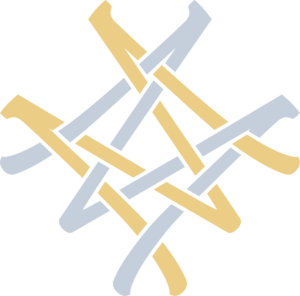Nowadays, despite modern technologies, the Maclay Coast (the northeastern coast of New Guinea) remains hardly accessible for Russian and foreign researchers. However in 2017 the Miklouho-Maclay Foundation with scientists of the Russian Academy of Sciences from Moscow and St. Petersburg organized an expedition to the Maclay Coast. N.N. Miklouho-Maclay Jr., a descendant and a full namesake of the outstanding Russian scientist initiated the expedition. One of the goals was not only to continue the New Guinea and Oceania studies by Russian scientists, but also to provide comprehensive support to researchers and preserve continuity in the exploration of this region by Russian scientists.
First, we need to answer the question: why organize a research expedition to these remote regions from Russia in the XXI century? It would seem that everything has already been studied and Russian scientists will not discover anything new. D.D. Tumarkin, an outstanding Russian ethnographer, the Leader of the ethnographic expeditions to Papua New Guinea in the 1970s, spoke well about the significance of such studies: “The example of the Papuans of the Maclay Coast enables to trace the development of human civilization in this region from the period of the “Stone Age” up to the present day”.
We should remember that back in the XIX century, N.N. Miklouho-Maclay, the first European to arrive in the northeastern coast of New Guinea, met Papuans who in 1871 did not even know what iron was, he was the first to introduce them to metal items. No wonder that the Russian word “topor” [axe] and a dozen others have since been used by the residents of the Maclay Coast.
In the XXI century, N.N. Miklouho-Maclay Jr. set a goal to collect information on the changes that occurred on the Maclay Coast since the last Soviet expeditions and to establish friendly contacts with the island state. It was decided to gather a team of scientists from the Russian Academy of Sciences in Moscow and St. Petersburg to study this region in the field.
During the scientific research expeditions of 2017 and 2019, the indigenous people of the Maclay Coast, in particular the villages of Gorendu, Bongu and Gumbu, warmly welcomed the Russian scientists, which made it possible to conduct comprehensive research in this unique area of the planet. Thanks to the achievements of the Russian researchers, now the visitors of the Miklouho-Maclay Online Museum have an opportunity to learn about everyday life of the indigenous people of the Maclay Coast in detail.
Buildings
Now, the residential and non-residential buildings in the villages of Gorendu and Bongu can be divided into five categories: family hut, adolescent house (men’s house), Initiation House, single hut and household outbuilding. At the times of N.N. Miklouho-Maclay, the first four existed; the outbuildings began to appear later. All residential huts are still constructed almost exclusively of natural materials. The most significant architectural change in the construction of houses that occurred at the turn of the XIX and XX centuries was the use of piling construction.
Family huts represent a significant variety, which is primarily determined by the number of family members. The huts are divided into rooms by relatively low partitions made of split bamboo trunks (the walls of the huts are made of the same material). There is a kitchen or a small storage room for household utensils in some of the family huts. However, as a rule, the buildings made of plant materials in the local climate are usable for only a few years, after which the decrepit building is destroyed, and a new one is constructed nearby.
Initiation House was not mentioned by N.N. Miklouho-Maclay, nor by the members of the first Soviet expedition. Meanwhile, this type of building, according to its constructive and socio-religious characteristics, has changed very little over the past 150 years. Unlike the rest of the buildings, it has a soil floor, and its roof descends almost to the ground, reflecting the shape of New Guinea’s buildings of the pre-contact period. Each village has only one Initiation House, which is always located at a considerable distance from the village, in the jungle. All male teenagers aged 12-18 are required to undergo the initiation rite. They live in the house for a month, after which, having received adult status, they move to the adolescent house. The Initiation House is still completely inaccessible to women and uninitiated boys. It is the Initiation House that remains the most striking expression of the traditional Bonguan culture, both in architectural and socio-religious terms.
Outbuildings are represented by so-called “kitchen huts”, sheds for drying copra and lavatories. They are built without walls and serve as storage rooms for kitchen equipment. They are always located near family huts and the places for cooking.
Modern field research showed that the dwelling of the Chief of the village and the Gorendu clan, Asel Tui (a descendant in the fifth generation of the same Tui, who became a Papuan friend of Miklouho-Maclay in the XIX century) is currently a unique example of how huts were built in the times of Miklouho-Maclay 150 years ago, i.e. on the ground.
There are now buildings that are completely constructed of modern building materials: school buildings (in Bongu, the school has several buildings), a church and a small medical center. The school in the village of Bongu is designed for three villages and for five hundred children of different ages, where they get education up to 7-8 grade (in accordance to Russian standards).
Elements of traditional culture and the modern world
A more detailed study of everyday life of the Papuans (indigenous people), whose ethnicity has not undergone any significant changes over the past 150 years, which indicates minimal migration between the regions of the island, revealed many other well-established elements of their traditional material culture. For example, mats woven of coconut palm leaves are still widely used in everyday life, clay pots produced in the village of Bili Bili are used for cooking, wicker bags are commonly used, however, as early as the end of the XIX century they were only a women’s accessory mainly for carrying children and household utensils, currently they are used by both men and women. There are also various adornments made of wild pig tusks and shells (they were considered money in the XIX century and now are still valued and used in necklaces and jewelry).
Despite the penetration of attributes of the modern Western world, the Papuans (indigenous people) of these villages carefully preserve many of their traditions. Their original culture has not completely dissolved under the pressure of innovations and harmoniously gets along with such innovations as radio, cell phones, solar panels, and modern dishes for cooking. In general, the inhabitants of the villages of Bongu, Gorendu and Gumbu have kept many elements from their traditional culture, and modern elements are superimposed on their traditional way of life. Moreover, many local residents are very passionate about their ethnocultural identity and instill it in the younger generation with all their might.
Wooden dish “doru” can still be found in some huts. Traditionally, it was made in other villages, and the residents of Gorendu and Bongu acquired them by exchange.
In everyday life the villagers of Gorendu and Gumbu wear European-style clothing: men wear shorts, T-shirts and shirts with short sleeves; adult and elderly women prefer long dresses, and girls mostly also prefer T-shirts and shorts. Some men wear hats and caps. The festive clothes and accessories of the Bonguans have hardly changed since the times of N.N. Miklouho-Maclay.
Food
Vegetables have always prevailed over meat in the diet of Bonguans. For 150 years, the main agricultural crops were coconut palm, yams, taro, sweet potatoes, bananas, sugarcane. N.N. Miklouho-Maclay brought such crops as pumpkin, watermelon, corn and papaya to the Maclay Coast. N.N. Miklouho-Maclay’s diary notes inform that the Bonguans were able to cook many dishes and mastered different ways of cooking (boiling, smoking, baking, frying). Bananas belong to one of the vegetable varieties that are consumed after heat treatment. Of the plants introduced by N.N. Miklouho-Maclay, papaya and corn are still very popular among Bonguans. They have finally stopped breeding domestic pigs (because they were trampling down the garden crops), but keep on hunting wild pigs. They continue to breed chickens, but their meat, like pork, remains more as a festive meal. Fish and shellfish remain the most frequent source of animal protein. In addition to water and coconut juice, the most common drink is tea. Some families make juice from fresh papaya.
Legends and stories about N.N. Miklouho-Maclay
During the 2017 expedition, N.N. Miklouho-Maclay Jr. collected legends and stories about his famous ancestor from the villagers of Bongu, Gumbu and Gorendu. These stories and legends have been passed on from generation to generation by the elders of these villages since the XIX century. And these memories about the outstanding researcher and a great friend of the Papuans (indigenous people) correspond to his diary notes in striking accuracy, and some facts allow us to believe that Miklouho-Maclay was almost a deity for the locals, “tamo boro rus” or “big Russian man”, who left a mark forever in their hearts and legends. In order to preserve the memory of the traveler, the locals even used to give their children his name – Maclay.
The original culture of the Maclay Coast has been preserved for centuries
Despite the active penetration of modern civilization, which affects even such remote places of the planet, the villagers of Gorendu and Bongu still preserve many elements of their original material culture, which are the most vivid evidence of the commitment of the ethical group of Bongu to the cultural traditions of their ancestors.
An important result of the Russian expeditions of 2017 and 2019 was that all the members could see firsthand that Russia is remembered in this region. They still remember it because of N.N. Miklouho-Maclay. The outstanding Russian scientist, humanist, and public figure used the example of Papuans (indigenous people) of New Guinea to prove to the whole world that no ethnic group can be considered inferior because of any differences from a white person, who is only a part of this world, but not a standard. Miklouho-Maclay emphasized that it was necessary to respect the culture of all peoples inhabiting our planet, and warned against attempts to interfere in their development by imposing our own standards. The researcher’s respectful attitude to the indigenous people of New Guinea became the key to the fact that stories about him have been passed on on this island up to the present day. In Papua New Guinea, the great Russian scientist N.N. Miklouho-Maclay is one of the top five most important, recognized outstanding personalities, and his humanistic ideas are still relevant.



